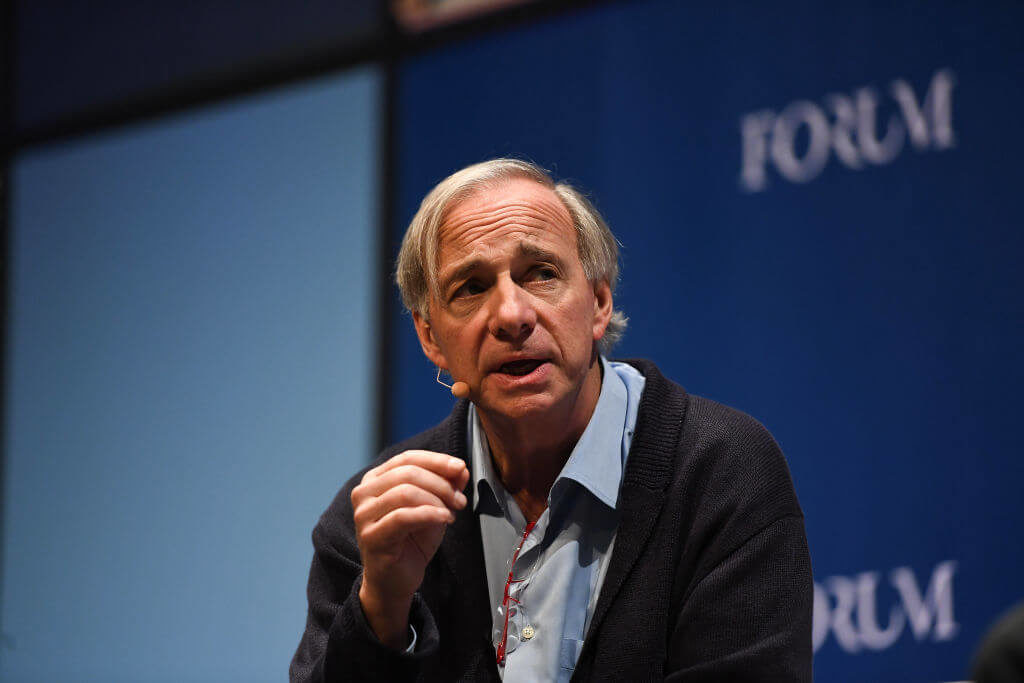Renowned billionaire investor and founder of Bridgewater Associates, Ray Dalio, has a simple, three-step strategy for anyone who is interested in getting into the stock market so everyone can let their money work for them.
“The biggest mistake that most people make is to judge what will be good by what has been good lately.”
Dalio himself is worth a cool $18 billion as the founder and Co-Chief Investment Officer of the largest hedge fund in the world, forming the company out of his two-bedroom apartment in 1975 in New York.
According to data from LCH Investments, Bridgewater has returned the largest cumulative net profit for a hedge fund ever, bringing in more than $50 billion for his clients by early 2018.
Here is Dalio’s three-step method, outlined by CNBC:
1. Decide How Much You Can Sock Away
“Savings equals freedom and security,” Dalio tells CNBC Make It. “How much freedom and security do you need?”
“Ask yourself, ‘How long can I get by on my savings without having any income? How many months or how many years of freedom and safety do I need?’ and make sure that you have more than that,” he advises.
“When I started working, I worked to get six months of savings freedom and security, then a few years, then I started to think about my kids’ needs over time and I calculated that number,” Dalio explains. “I saved to get those amounts of money. I recommend that you do the same.”
2. Create a Diversified Portfolio
The next step is to decide what to do with that money.
Keeping all of your cash in a savings account isn’t a smart decision, Dalio points out, because of the value depleting effects of inflation. Right now, the national average interest rate for a savings account is only 0.10 percent, according to data from Bankrate, meaning you’re only earning a few cents for every dollar you save. Meanwhile, the consumer price index — which measures inflation (the rising costs of goods and services) — rose 2.7 percent in the past year.
“That’s the worst thing you could do because it is the surest tax on your money,” Dalio says. “You will bleed slowly to death because the after-tax returns are lower than inflation by a little per year.”
In order to prevent your savings from losing their value, the best choice is to invest your money into a diversified portfolio of assets that increase in value faster than inflation. “Know how to diversify into non-cash assets like stocks, bonds and real estate,” Dalio says.
A typical portfolio might be split between 50 percent bonds and 50 percent stocks, but Dalio argues that isn’t really diversified in “Money: Master the Game” by Tony Robbins.
“When you look at most portfolios, they have a very strong bias to do well in good times and bad in bad times,” Dalio says in the book. To avoid your portfolio simply rising and falling with the market, his advice is to spread out and balance the risks of each investment.
Here’s his breakdown for what a well-diversified portfolio might look like, according to the book: 30 percent allocated to stocks, 40 percent to long-term U.S. bonds, 15 percent to intermediate U.S. bonds, 7.5 percent to gold and 7.5 percent to other commodities. (The portfolio does need to be rebalanced annually, he adds.)
That mix is intended to do well under any condition, whether the economy is growing or shrinking, or whether inflation is rising or falling, he explains.
3. Learn the Market’s Long-Term Cycles
For investors who plan be more active in their investing than just buying and holding in a diversified portfolio, it is crucial to understand the historical patterns of the economy and the stock market.
“If you deviate from that balanced mix — which I don’t recommend doing because market timing is a tough game for a non-professional and for professionals to play well — know how to play the cycles,” Dalio tells CNBC Make It.
“Know how to buy when everyone else wants to sell, and how to you sell when everyone else wants to buy.”
For example, after the financial crisis in 2008, the U.S. markets eventually recovered from the recession and entered the longest-running bull market in modern financial history, beating the bull market after World War II. In the 10 years following the collapse of Lehman Brothers, the S&P 500 increased by 130 percent.
Cautious consumers, wary of risking their money to buy stocks after the crash, missed out on the chance to earn big returns: A portfolio of 60 percent stocks and 40 percent bonds returned about 8 percent over the last 10 years, while returns from interest for savings accounts stayed at record lows.
By understanding historical patterns, investors can avoid missing out on such opportunities, Dalio explains.
“The biggest mistake that most people make is to judge what will be good by what has been good lately,” Dalio says. “So if a market has gone up a lot, they think that’s a good market rather than it’s more expensive. And when it goes down a lot over the last few years, they think, ‘That’s a bad market, and I don’t want any of it.'”
